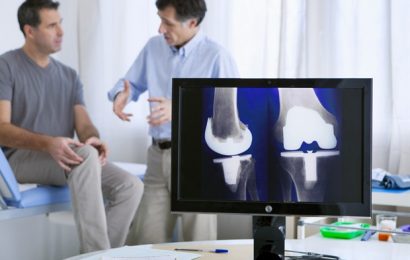
Abusive head trauma (AHT) is one of the leading causes of traumatic death and disability in infants and young children in the United States. A missed diagnosis can lead to death if the child is mistakenly returned to an abusive situation.
For the first time, Penn State researchers, including lead investigator Dr. Kent Hymel, professor of pediatrics at Penn State College of Medicine, have conducted a randomized control trial of a validated and evidence-based child abuse screening tool. Their work appears in the current issue of The Journal of Pediatrics.
“Our young medical subspecialty of child abuse pediatrics is working to establish best practices for the evaluation and diagnosis of child maltreatment,” said Hymel, who also is a co-funded faculty member of the Child Maltreatment Solutions Network. “Some pediatric physicians are hesitant to screen for abuse because launching an evaluation can stigmatize parents, increase stress, strain the doctor-parent relationship, increase hospital costs, and lengthen hospital stays.”
According to Hymel, doctors routinely screen for substance abuse, sexually transmitted infections, pregnancy, and other medical conditions that sometimes carry social stigma.
“If evidence-based screening for child abuse was a routine clinical practice, fewer abuse cases would be missed, parents might feel less directly stigmatized, and health care costs linked to ‘missing’ a critical diagnosis would likely decrease,” Hymel said.
To help physicians decide whether or not to initiate abuse evaluations in their young, acutely head-injured patients, the researchers developed and validated a four-variable clinical decision rule (CDR) that can detect AHT with 96% sensitivity in pediatric intensive care units (PICU) and other medical settings.
To test its effectiveness, PICU and child abuse physicians at four U.S. academic medical centers were trained and encouraged to apply the CDR as an AHT screening tool for 32 months. Their child abuse evaluations, and relevant patient outcomes, were compared to those at four matched control PICUs.
Hymel said that when the CDR is applied, it categorizes young, acutely head-injured patients as higher risk versus lower risk and recommends thorough abuse evaluations for all higher-risk patients.
“By applying the CDR at or near the time of PICU admission, we found that the tool significantly increased evaluations of higher-risk patients and reduced potential cases of missed AHT, compared to control sites,” said Hymel. “We predict that, applied accurately and consistently, the CDR can save lives, reduce hospital costs, and lessen the adverse impacts of physicians’ inexperience, implicit bias and practice disparities.”
The research team plans to conduct a secondary analysis to determine which interventions were most impactful, cost-effective and sustainable. Their next long-term goal is to support trials of the CDR’s performance under less well-controlled conditions, and in more diverse clinical settings.
Source: Read Full Article


